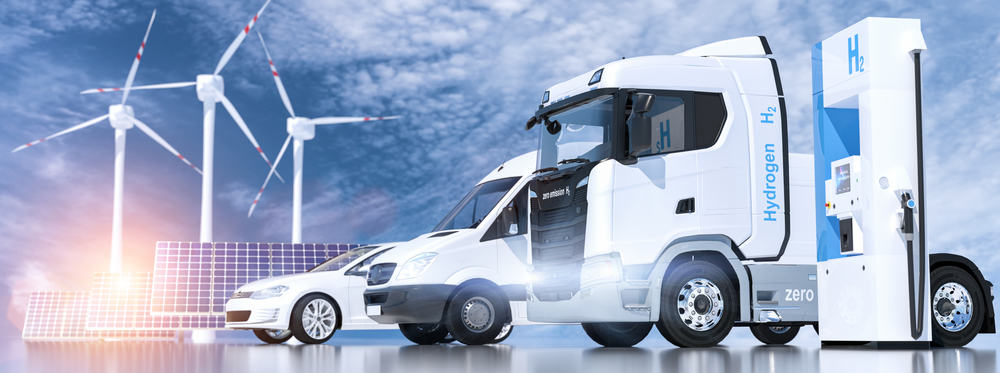E-Rickshaw Price Unveiled
As I reflect on the changing landscape of transportation in our world today, it's inspiring to see the shift towards sustainable options, with electric vehicles at the forefront of this movement. Among these innovative solutions, I've been particularly intrigued by the rising popularity of e-rickshaws, especially in countries like India, Bangladesh, and Nepal. These small, electric-powered vehicles have been gaining traction as an eco-friendly and cost-effective means of commuting for short distances within bustling city environments.
For someone like me, who often finds themselves navigating the bustling streets of urban centers, the appeal of e-rickshaws is hard to ignore. The fact that they are not only environmentally friendly but also economical makes them an attractive option. Yet, as I embarked on my journey to find the perfect e-rickshaw, I soon realized that the process of choosing the right one can be quite challenging, especially when you're working with a limited budget.
In this personal blog post, I want to share my own experiences and insights into the world of affordable e-rickshaws. I'll delve into the various price ranges available, drawing from my own research and interactions with experts, to help you, dear reader, make a well-informed decision when considering these eco-friendly vehicles for your daily commute. So, let's embark on this journey together and explore the world of budget-friendly e-rickshaws.
What is an E-Rickshaw?
An E-rickshaw, also known as an electric rickshaw or e-trike, is a type of low-speed electric vehicle that is widely used for transportation purposes in various countries, particularly in Asia. It is a three-wheeled vehicle that looks similar to a traditional autorickshaw or tuk-tuk but is powered by an electric motor and rechargeable battery instead of a gasoline engine.
The E-rickshaws motor is powered by electricity, which is stored in a battery that can be charged from an external power source. These batteries are usually made of lead-acid or lithium-ion technology and have varying capacities that determine the distance the vehicle can travel on a single charge.
One of the main advantages of e-rickshaws is their eco-friendliness. As they do not emit harmful pollutants or greenhouse gases, they are considered a cleaner alternative to gas-powered vehicles. They are particularly popular in urban areas where pollution levels are often high and regulations on emissions are strict.
Affordable E-Rickshaw Price Range

The cost of an e-rickshaw varies depending on the make, model, and features. However, you can find affordable e-rickshaws that are both durable and reliable. Here are some of the best e-rickshaws in the affordable price range:
- Bajaj RE EV: The Bajaj RE EV is a popular e-rickshaw in India that comes in two variants – the passenger and the cargo model. The passenger model has a seating capacity of four, while the cargo model can carry up to 350 kg of weight. The Bajaj RE EV has a top speed of 45 km/h and a range of 120 km on a single charge. The cost of the Bajaj RE EV starts at around INR 1.2 lakhs (USD 1,600).
- Mahindra Treo: The Mahindra Treo is a three-wheeled e-rickshaw that is popular in India. It has a seating capacity of four and a range of 130 km on a single charge. The Mahindra Treo has a top speed of 45 km/h and comes with features like regenerative braking and a digital instrument cluster. The cost of the Mahindra Treo starts at around INR 1.5 lakhs (USD 2,000).
- Atul Gemini: The Atul Gemini is a popular e-rickshaw in India that comes in two variants – the passenger and the cargo model. The passenger model has a seating capacity of four, while the cargo model can carry up to 500 kg of weight. The Atul Gemini has a top speed of 25 km/h and a range of 70 km on a single charge. The cost of the Atul Gemini starts at around INR 1 lakh (USD 1,300).
- Piaggio Ape E-City: The Piaggio Ape E-City is a three-wheeled e-rickshaw that is popular in India. It has a seating capacity of three and a range of 70 km on a single charge. The Piaggio Ape E-City has a top speed of 45 km/h and comes with features like regenerative braking and a digital instrument cluster. The cost of the Piaggio Ape E-City starts at around INR 2 lakhs (USD 2,700).
Advantages of E-Rickshaws
Rickshaws, also known as electric rickshaws, offer a multitude of advantages that make them a sustainable and economically viable mode of transportation:
Environmentally Friendly
One of the most prominent benefits of E-Rickshaws is their eco-friendliness. These vehicles produce zero emissions, which means they do not release harmful pollutants into the atmosphere. By choosing E-Rickshaws over traditional fuel-powered rickshaws, we can significantly reduce air pollution and contribute to a cleaner and healthier environment.
Cost-Effective
Electric rickshaws are not only green but also cost-effective. Their operating costs are substantially lower when compared to conventional fuel-powered rickshaws. This cost-efficiency stems from their energy-efficient electric motors and the reduced need for maintenance. As a result, E-Rickshaw owners and operators can enjoy higher profits and a better return on investment.
Quiet and Low Vibration
E-Rickshaws provide a smoother and quieter ride experience for passengers. The electric motors used in these vehicles produce minimal noise and vibration, enhancing passenger comfort. This feature is particularly valuable in densely populated urban areas, as it helps reduce noise pollution, contributing to a more peaceful and pleasant living environment.
Economic Opportunity
E-Rickshaws also open up economic opportunities for individuals and small businesses. They are relatively affordable to purchase or lease, making them accessible to a wide range of entrepreneurs. These electric vehicles can be owned and operated by drivers, creating job opportunities in transportation services. Additionally, they offer a sustainable alternative to traditional rickshaws, helping drivers secure a steady income while reducing their carbon footprint.
Energy Efficiency
E-Rickshaws are highly energy-efficient vehicles. They can travel a significant distance on a single charge, making them an economical choice for both short and long-distance transportation. This efficiency reduces the need for frequent recharging, saving time and electricity costs.
Reduced Dependency on Fossil Fuels
By using electricity as their primary power source, E-Rickshaws reduce our dependency on fossil fuels. This not only conserves valuable natural resources but also makes transportation less vulnerable to fluctuating fuel prices.
Low Operating Costs
Apart from lower maintenance costs, E-Rickshaws have fewer moving parts than traditional rickshaws with internal combustion engines. This simplicity results in reduced wear and tear, leading to further savings in terms of repairs and replacements.
Factors to Consider When Buying an E-Rickshaw

When it comes to purchasing an e-rickshaw, there are several important factors to consider. Firstly, the battery life and range of the e-rickshaw should be taken into account. Secondly, the motor power and torque should be considered, as this will affect the E-rickshaws ability to handle steep inclines or carry heavy loads.
Thirdly, the size and capacity of the e-rickshaw should be taken into consideration, based on the intended use and passenger or cargo requirements. Additionally, factors such as maintenance and repair costs, as well as the availability of spare parts and after-sales services should also be evaluated.
Other considerations may include the brand reputation, safety features, and overall cost-effectiveness of the e-rickshaw. It is important to carefully weigh these factors and conduct thorough research before making a purchase decision. These include:
- Price: The cost of an e-rickshaw varies depending on the make, model, and features. You should set a budget and look for e-rickshaws that are within your price range. Remember that while an affordable e-rickshaw may save you money upfront, it may not be as durable or have as many features as a more expensive model.
- Battery Life: The battery life of an e-rickshaw is an important factor to consider. The longer the battery life, the longer you can use the e-rickshaw without needing to recharge it. Make sure to look for an e-rickshaw with a battery life that meets your needs.
- Range: The range of an e-rickshaw refers to how far it can travel on a single charge. If you plan to use your e-rickshaw for long distances, make sure to choose a model with a longer range.
- Capacity: The capacity of an e-rickshaw refers to how many passengers it can carry or how much weight it can carry. Make sure to choose an e-rickshaw that meets your capacity needs.
- Features: Different e-rickshaw models come with different features. Some common features include regenerative braking, digital instrument clusters, and air conditioning. Make sure to choose an e-rickshaw with features that you need and will use.
- Brand and Reputation: When choosing an e-rickshaw, it's important to consider the brand and reputation of the manufacturer. Look for manufacturers with a good track record of producing reliable and durable e-rickshaws.
Tips for Making an Informed E-Rickshaw Purchase
Investing in an E-Rickshaw is a substantial financial decision, and it's crucial to ensure you're well-informed before making your choice. To assist you in navigating this important process effectively, here are some comprehensive tips with more detailed information:
Thorough Research is Key
Start by conducting extensive research on the various E-Rickshaw models available in the market. Take the time to delve into their specifications, performance characteristics, charging capabilities, and price ranges. Additionally, consider factors such as the seating capacity, payload capacity, and overall build quality. This research phase is vital to identify the E-Rickshaw that aligns best with your specific requirements and financial constraints.
Evaluate the Total Cost of Ownership
It's crucial not to base your decision solely on the initial purchase price. E-Rickshaws come with ongoing expenses that can significantly impact your overall budget. Take into account factors such as battery life, charging infrastructure, maintenance costs, and energy efficiency. While a higher upfront cost might seem daunting, it may translate into lower operational costs and increased profitability in the long run. Consider the lifecycle costs rather than just the sticker price.
Explore Government Incentives and Subsidies
One of the noteworthy aspects of purchasing an E-Rickshaw is the availability of government incentives, subsidies, and tax benefits that vary by region. These incentives aim to promote the adoption of electric vehicles and can substantially reduce your overall expenditure. To take full advantage, research the local or national programs available in your area and ensure you comply with their requirements to maximize the potential savings.
Arrange Test Drives for Hands-On Experience
Whenever possible, schedule test drives of the E-Rickshaws you are interested in. Practical experience behind the wheel will allow you to assess critical aspects such as handling, ride comfort, noise levels, and overall suitability for your intended use. It's an opportunity to gauge the vehicle's performance firsthand, ensuring that it meets your expectations and aligns with your operational needs.
Prioritize Warranty and After-Sales Service
Selecting a reputable manufacturer is paramount when purchasing an E-Rickshaw. Look for manufacturers or dealerships that offer comprehensive warranties, as they can be your safeguard against unexpected repair costs in the future. Additionally, inquire about the availability and quality of after-sales service, as responsive and reliable support can keep your E-Rickshaw in optimal condition and minimize downtime, contributing to your overall profitability.
FAQs (Frequently Asked Questions)
Q1: What is the difference between an E-Rickshaw and a traditional auto-rickshaw?
A1: E-Rickshaws are electric-powered three-wheeled vehicles, while traditional auto-rickshaws typically run on gasoline or diesel. E-Rickshaws are eco-friendly, produce zero emissions, and have lower operating costs compared to their traditional counterparts.
Q2: Are E-Rickshaws suitable for long-distance travel?
A2: E-Rickshaws are primarily designed for short to medium-distance travel within urban areas. While some models have decent ranges, they may not be ideal for long journeys due to limited battery capacity.
Q3: What is the average battery life of an E-Rickshaw?
A3: The battery life of an E-Rickshaw can vary depending on factors like usage, maintenance, and battery type. On average, E-Rickshaw batteries can last anywhere from 2 to 5 years or more.
Q4: Can E-Rickshaws be charged at home?
A4: Yes, E-Rickshaws can be charged at home using a standard electrical outlet. However, some operators may prefer dedicated charging stations for faster charging and convenience.
Q5: Are there government incentives for purchasing E-Rickshaws?
A5: Many governments offer incentives, subsidies, and tax benefits to promote the adoption of electric vehicles, including E-Rickshaws. These incentives can vary by region, so it's essential to check with local authorities for specific details.
Q6: What is the maintenance cost of an E-Rickshaw compared to a traditional auto-rickshaw?
A6: E-Rickshaws generally have lower maintenance costs than traditional auto-rickshaws since they have fewer moving parts and no internal combustion engine. Maintenance costs can vary depending on usage and the manufacturer's build quality.
Q7: Can E-Rickshaws operate in hilly or steep terrain?
A7: E-Rickshaws vary in motor power and torque. Some models can handle mild inclines, but they may struggle in hilly or steep terrain. It's essential to choose an E-Rickshaw with adequate power for your specific operating conditions.
Q8: Are spare parts readily available for E-Rickshaws?
A8: The availability of spare parts for E-Rickshaws can be influenced by several factors, including the manufacturer and geographical location. It is essential to conduct thorough research and choose a reputable manufacturer or dealer with a robust supply chain for spare parts. This approach ensures that you can easily access the necessary components for maintenance and repairs, minimizing downtime and ensuring the longevity of your E-Rickshaw.
Q9: Can E-Rickshaws be used for carrying cargo?
A9: Indeed, E-Rickshaws have evolved to offer versatile transportation solutions. Some E-Rickshaw models are specifically designed for cargo transportation, featuring higher payload capacities and robust chassis configurations. These cargo-oriented E-Rickshaws are well-suited for businesses and individuals looking to transport goods, making them a practical choice for delivery services and logistics in addition to their primary function of passenger transport.
Q10: Are there safety features in E-Rickshaws?
A10: Safety features in E-Rickshaws can vary significantly depending on the model and manufacturer. While some basic safety measures are typically present, such as seatbelts and headlights, advanced safety technologies may be integrated into certain models. These can include regenerative braking systems for enhanced stopping power, digital instrument clusters providing vital information to the driver, and even additional safety enhancements like reinforced frames or impact-absorbing features. To ensure your E-Rickshaw meets your safety requirements, it is advisable to inquire about the specific safety features available in the particular model you are interested in.
Conclusion
As I wrap up my exploration of E-Rickshaws, I'm deeply impressed by their potential to revolutionize urban transportation. These eco-friendly vehicles not only align with my commitment to a cleaner environment but also fit well within my budget. The serene, low-vibration rides they offer create a more pleasant urban experience, both for me and those around me.
My personal journey has taught me that choosing an E-Rickshaw is not just about making a financial decision; it's about making a conscious choice for a greener, more sustainable future. Through research, test drives, and careful consideration of incentives, I've come to understand the multifaceted advantages of E-Rickshaws.
They represent not only economic opportunities but also a way to reduce our reliance on fossil fuels and contribute to a cleaner world. Embracing these vehicles is more than just a mode of transport; it's a step towards shaping a better tomorrow.
Sources
https://smartnet.niua.org/sites/default/files/resources/e-rickshaw_assessment_summary_report.pdf
https://www.sciencedirect.com/science/article/pii/S0386111221000297

